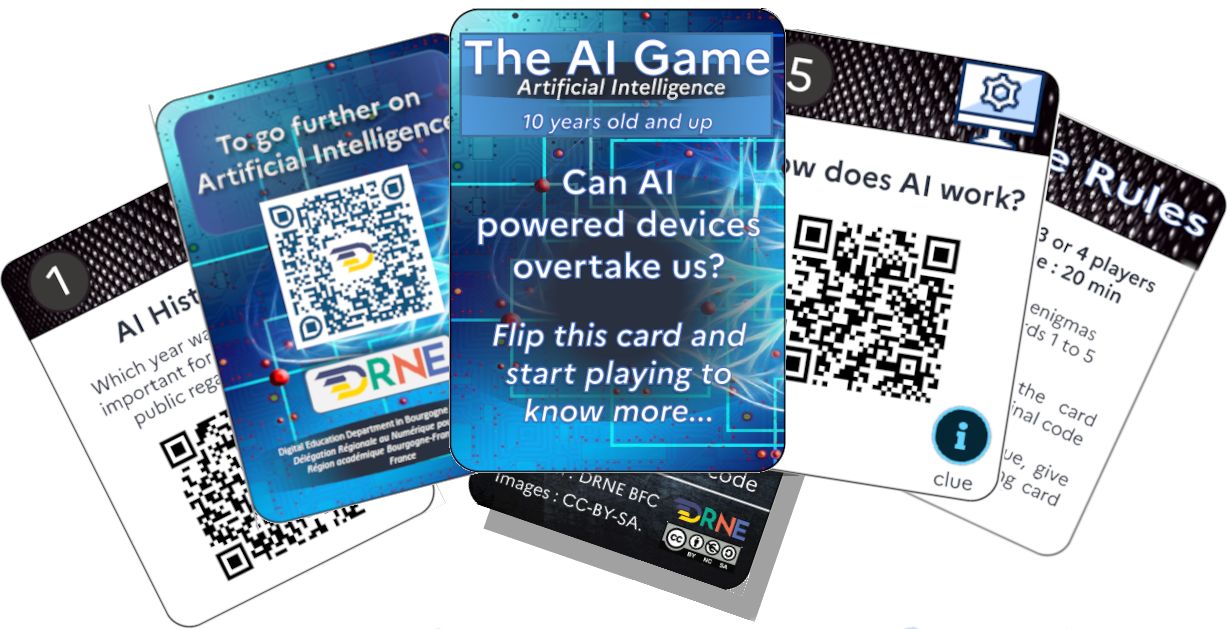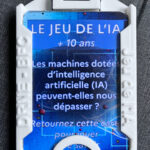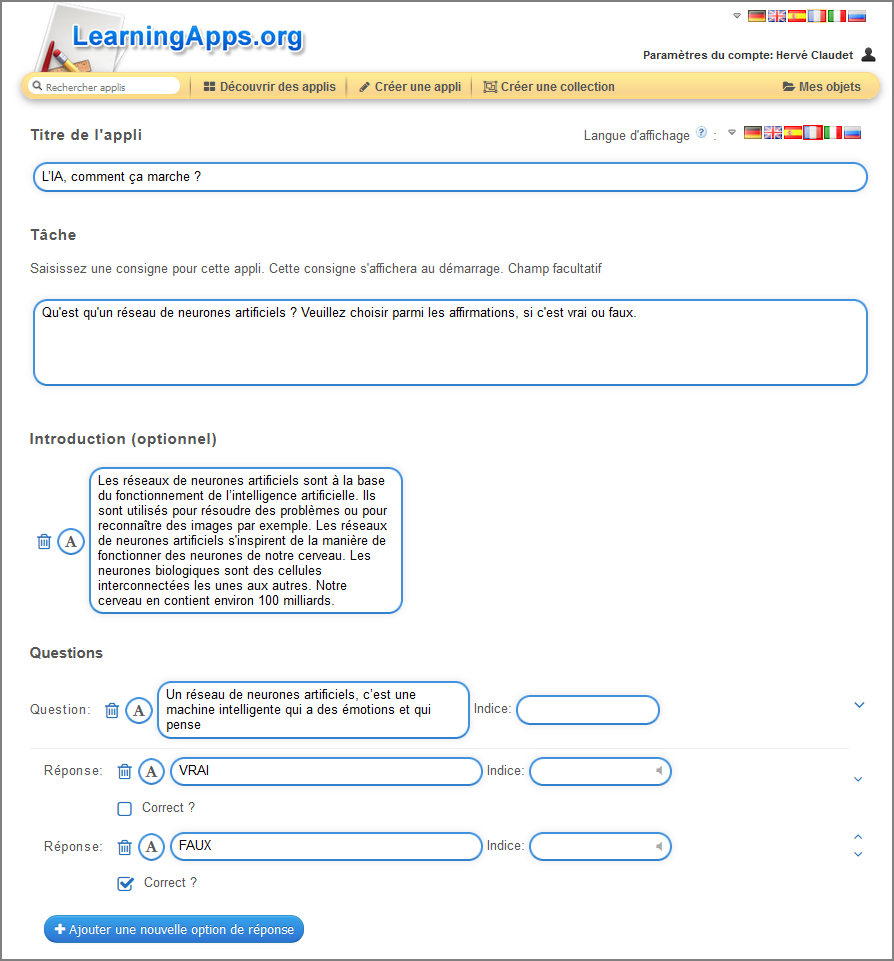
Version française![]()
French version
Using its experience on teaching AI (training sessions, smart robot experimentations in middle schools, educational support for the P2iA- Partnership about Innovation and Artificial Intelligence- in schools from the local education board of Bourgogne-Franche-Comté area in France), the DRNE (regional department on digital education) designed a game to demystify AI and initiate pupils to it. In this game, players from 11 years old onward must solve different riddles about AI within 20 minutes.
 The AI game to print and the card holder (3D print)
The AI game to print and the card holder (3D print)
-
Download the AI Game here (latest version of the AI Game)
-
Download the Game Scenario which includes the answers, the codes and the clues (to be kept secret!)
- 3D printing related to card holder (STL file, 2,5 Mo)
The method behind the AI game creation
The initial idea was to design a game on AI that would last less than 20 minutes and would be adapted to both middle school pupils and adults. This short format enables teachers to introduce AI essentials at the beginning of a teaching sequence or to conduct a discovery workshop.
The game was built using the Escape Cards website developed by Guillaume Bonzoms, a former DRNE member. It consists in a set of tools to help create a card game that fits in an educational escape game.
Our endeavour was made easy thanks to Matthieu Pretot, a teacher from Diderot middle school in Besançon, who also works on digital engineering in education in our institution. Indeed, his game on energy sources (cards ; scénario) was used as inspiration for our work.
The game mechanic is easy and direct thanks to the use of QR codes, Learning Apps activities and the Escape Cards platform. « Digiplay » by La Digitale, another learning service, also helps visualise video extracts coming from a third party application.
The ressources used to create the AI Game
- Methodology and ressources to create an « Escape Cards » game : https://escapecards.fr/
- Game App for the players : https://app.escapecards.fr/
- Learning apps: https://learningapps.org/
- Digiplay : https://ladigitale.dev/digiplay/#/
Detailed steps to create the game
 1. The objectives were based on 5 topics, which all give a quick view on AI:
1. The objectives were based on 5 topics, which all give a quick view on AI:
a. Its historical development, with four key dates that were AI landmarks
b. Its work processes with supervised, unsupervised and reinforcement learning.
c. « Is it AI or not ? » to highlight AI uses in everyday life
d. AI hazards such as AI picture generation which can deceive humans.
e. How does AI work. A short video presenting the 4 pillars of AI : data, algorithms, devices and connectivity.
2. The targeted users are pupils from primary and middle school as well as unadvised adults.
3. To make sure the game duration would be limited to 20 minutes, five riddles were made up, each one of them matching a physical game card. The 5 cards can be used independently.
4. QR-codes were made to give access to the 4 Learning Apps activities, which enable players to solve the 4 riddles and discover the topics given above.
When solving each of the riddles, players are given a code word that we invented through the positive feedbacks of the activities.
5. The fifth riddle was designed using Digiplay to give access to a short video extract. A QR-code was generated to access it thanks to the following website: https://q-r-code.fr/. This QR code was put on the 5th game card.
6. The « App.escapecards » platform enabled us to add:
a. The 5 codes (text) to be found from the 5 card riddles.
b. 2 clues to help find the code on 2 cards.
7. A first version of the card game was produced from the website template : https://escapecards.fr/etapes-cles/#creation
This version includes a total set of 8 cards :
- the 5 riddle cards,
- a launch card,
- a card helping to find the final code
- an instructions card with a QR-code sending players to the DRNE project page on AI.
8. In other words, the player is given :
- A card with a QR-code that launches the game and sends the player to the user board that starts the countdown
- The clues for two of the cards that can be accessed by a click on the « information » button

- 5 activity cards that lead to a code that a can be typed in through the « unlock » button:

If the codes typed in are correct, another code is given. Sorting the 5 codes gives access to the final code which can be typed in using the same button in order to win and end the game.
9. This set of cards was first tested inside our Digital Department and then with 11 year-old pupils.
10. Building up on this experience, a second version of the set of cards was released and printed on plastic cards.
11. During the « Cybertech’Comtois 2022 » event, a workshop was set up to host a game with 24 teams of 4 middle school pupils. The best players solved the riddles within 8 min 45 seconds whereas the slowest team took 18 minutes to finish it.
12. This life-size event enabled us to adapt some of the game wording as well as its user experience.
To go further on the Artificial Intelligence topic, visit the following website :
https://drne.region-academique-bourgogne-franche-comte.fr/dossiers-intelligence-artificielle/